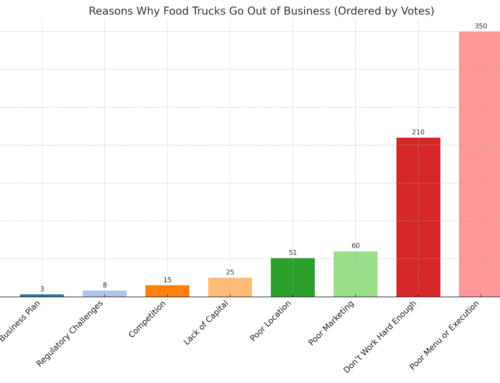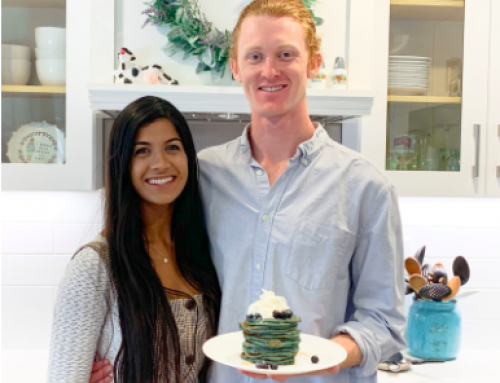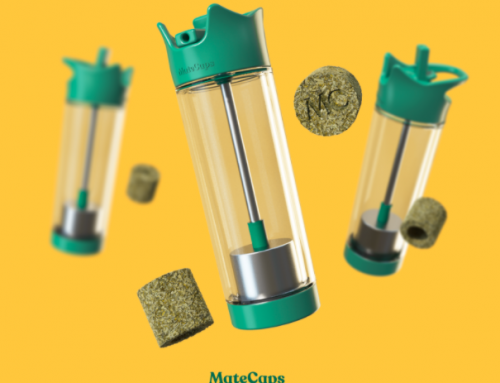Hello! Who are you and what food business did you start?
Hi! My name is Rachael Lake and I am the founder of a meal kit delivery service called Takeout Kit. The meal kits focus entirely on international cuisine and we send only non-perishable pantry ingredients with a long shelf life.
Our customers are typically home chefs who are looking for something a little different than your everyday American food. Authentic ingredients can be very hard to find if you don’t live in a big city.
The process of finding great recipes and necessary authentic ingredients can involve hours of driving to multiple stores, stress, and dinner disasters. Or if you buy the ingredients online you often need to purchase large sizes and pay for shipping.
Our meal kits make this process easier – we send you everything you need including the authentic ingredients along with a tested recipe to show you how to make you favorite restaurant “take-out” style dishes like pad Thai, ramen, and butter chicken.
Our products also attract gift givers (including corporate gifting), students and new home chefs, suburban/rural families, and convenience-driven home chefs.
Since 2016 we have partnered with Walmart, UncommonGoods, and Jet.com and been featured in top publications like Forbes, TechCrunch, and SELF.
What are your ballpark monthly or annual revenue numbers?
While we can’t give exact numbers, our growth has been very strong at 100% YoY growth last year and 50% growth so far this year.
We’re excited to see what’s next for us as we explore new ways to get Takeout Kits to homes faster through Amazon Prime. We’re on track to have shipped 25,000 meal kits by the end of 2019.
What’s your backstory and how did you come up with the idea?
The inspiration for Takeout Kit came when I moved to southern California from NYC and tried to recreate my favorite New York restaurant dishes. It was nearly impossible – requiring all-day excursions and hours of driving to gather the specialty ingredients I needed. I realized that if it was this difficult in a relatively urban area, it must be downright impossible to pull off in rural or suburban areas.
At the time, Blue Apron had just started heating up, and I loved the service, but working 12+ hour days in finance made those meal kits not so convenient.
I stressed about leaving work to cook before ingredients spoiled – it added more stress to my life than it eliminated. And I chuckled at the fact that none of these services seemed to really understand what it meant to be a striving professional woman; I did not have 60+ minutes 3 days in a row to cook! Take-out, or bust?
I did not have 60+ minutes 3 days in a row to cook! Take-out, or bust?
Marry the two problems and you get Takeout Kit – restaurant-quality international food with a long shelf life for added convenience.
Take us through the process of developing your meal kits?
Our first products were inspired by cooking classes I had taken while traveling abroad. I created meal kits out of my favorite recipes, portioned out the ingredients, and included a colorful recipe card. My friends were more than happy to be taste-testers and I was a little obsessed about getting the flavor just right (and authentic).
Now that we’ve developed relationships with our suppliers and have a framework for choosing ingredients and recipes, our R&D process has gotten a lot faster.
I tend to focus more on recipes that our customers are looking for online (like ramen kits) rather than just products that I love. But sometimes I indulge and create another personal favorite e.g. Peruvian aji de Gallina or Sichuan Mapo Tofu.
Also, our packaging and branding started out very simple and evolved into a more giftable design:
Finding suppliers is a fragmented and often frustrating endeavor for small startups (and a great pain point for anyone looking for business ideas!). On low volume or new products, sometimes it’s less of a hassle to just buy products retail at a local market or on Amazon.
When you prove the product and have a little volume, you can reach out to the companies that make your products to buy wholesale.
My advice here would be to stay away from brokers and distributors. I have found that their commission cancels our the benefit of buying wholesale entirely. Go directly to the brands if possible or just buy from Amazon at first! Also, look for local suppliers whenever possible.
Much of the cost in food is in transportation – many suppliers offer will call so you can pick up ingredients in your personal vehicle and save on freight costs.
Describe the process of launching the business.
I graduated from business school early and used my last semester to get Takeout Kit off the ground. My goal was to take the idea from concept, development, and launch within 6 months. In reality, the concept and getting started phase took the most time (3 months).
Then when I nailed that down the pieces started to fall into place quickly. The R&D/launch phase only took about 3 months and required very little capital (free website template, packaging, and ingredients).
Lesson learned: never launch on a holiday 3-day weekend. My launch depended on the attention of family and friends and (obviously) they were away enjoying Memorial Day weekend instead of responding to my announcement.
I heard crickets the first day and I remember thinking “Is this the worst idea ever and no one wants to tell me?”. But sales started to trickle in when they returned to work the week after. I received a lot of sincere congratulations for being brave enough to start my own business.
By the way, I still have that fear of crickets as an entrepreneur whenever I send an email, launch a new product, post to social media, etc. I think that’s the nature of putting yourself and your products out there. You never know until you start getting reviews, feedback, referrals and even then you wonder if it’s fleeting. You should definitely ask yourself if you can get used to that discomfort because it can definitely add a lot of stress.
The best decision I made was tapping into Cratejoy, an online marketplace for subscription boxes. I learned a lot of basic things from their forums about how to set up a business, listing, SEO, photography, etc. I would also recommend looking for platforms that focus on integration with apps even if they are more expensive than alternatives. I ended up going with Shopify and have never looked back.
If you think about how much it costs a developer to custom build a website and features for you ($8-10k) it makes a lot more sense to add on apps and features to a strong template/infrastructure like Shopify has.
Since launch, what has worked to attract and retain customers?
In the beginning (and even now) I have worked on getting our name out there in organic ways. Mostly because I just didn’t have a marketing budget.
At first this was listing on the Cratejoy marketplace, then sending sample boxes to review sites like HelloSubscription and My Subscription Addiction. At the time, meal kits were buzz-worthy so I reached out to reporters who were covering the space and offered sample boxes.
Our lucky break was when a reporter from Forbes agreed to try a kit and include us in the #1 ranking Google article about meal kits (I owe her so much!). When that link went live, orders started pouring in by the minute. I learned quickly to focus my time and attention only on efforts that can move the needle – a partnership with Walmart, a top ranking review article, etc.
That has been a very good call (as a lean startup) and has saved my sanity. Lesson learned: don’t be afraid to reach out no matter how high profile the person – you have a lot more to gain than to lose.
I was also lucky to have a former classmate and friend who specialized in SEO (search engine optimization). She gave me a few tips about how to construct my product pages for keywords and how to clearly name photo files that you upload on your site.
Between the SEO and PR efforts, we were able to be part of the original conversation without spending much money on advertising. Once that happens, it’s much easier for other sites to mention you and you start seeing a flywheel effect.
Now we advertise to fuel our growth but I always try to make sure that the ad budget matches our product margin. Retargeting ads have been effective and we’re seeing good results so far with video ads.
We’re also okay with paying Amazon a commission for sales they bring in. This meets our marketing criteria of being where customers have an intent to shop online.
With food, social media channels like Instagram haven’t really worked for us – I can see them being better for fashion products and buzz-worthy brands. We maintain a presence there but decided to spend our time and resources where we’ve seen better success.
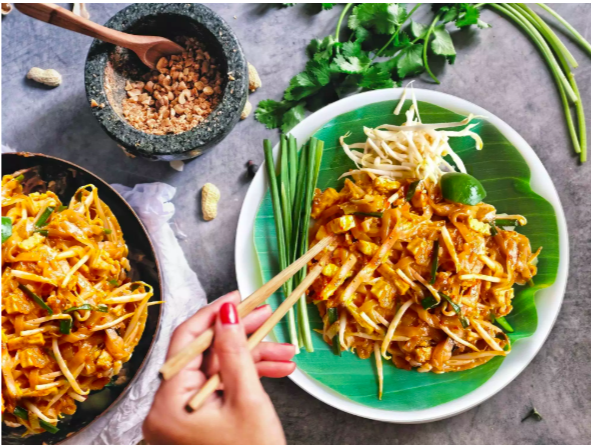
How are you doing today and what does the future look like?
We’ve been unit profitable from the very beginning – that was non-negotiable for me. This has slowed us down a bit in terms of marketing but I really wanted to hone the business model before going “all in.”
Now we’re at a point where we’ve figured out how to make it work and we can start being a more aggressive.
It’s still in the early stages for some of our strategies, but I am already seeing traction and most importantly, we’ve found a balance between lowering prices and still maintaining a healthy margin.
What Have You Learned by Starting a Meal Kit Company?
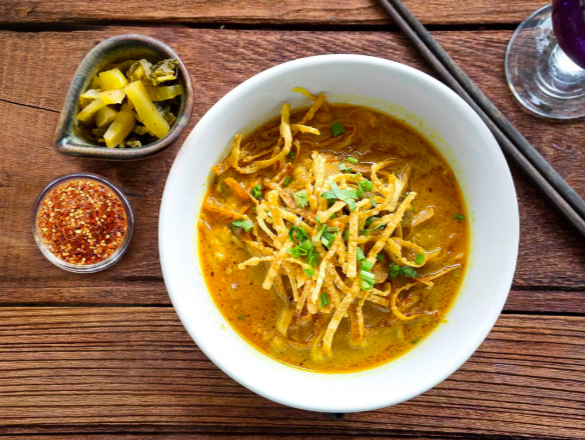
Yes, don’t start a meal kit business. Ha! Half kidding but there has been a lot of negative sentiment towards these type of products (products are too expensive, companies not being able to retain customers, etc.).
I believe that there is still a demand for our products but as a business owner you have to do your best to find your niche in a crowded and competitive market.
I also didn’t realize how quickly your company can fall out of the conversation. We held our own in the beginning with our PR mentions, but eventually there were so many meal kit companies to talk about that the smaller ones fell out of favor.
I should have realized how important momentum would be to gaining market share and brought in some outside capital or tried harder to stay in that race. Articles we worked hard to appear in have been updated and our name replaced or taken off the list because of our small size.
What Tools Do You Use for Your Meal Kit Service?
I’m a huge fan of Shopify and Amazon right now. Otherwise, I like to connect all of my fragmented back end systems with Zapier. Also, I’ve had great luck with designers on 99Designs.
What have been the most influential podcasts in your business journey?
Advice for other food entrepreneurs who want to get started or are just starting out?
If I were to choose a 2nd business I would choose something more automated, demand-driven, and a healthy product (rather than indulgent).
Also, I would choose a product that customers can’t easily make on their own. It’s been a lot of work for a razor thin margin, pricing pressure, and cut-throat competition.
A lot of the industry growth so far has been artificial/unsustainable but we’re hoping that slow and steady (and smart) eventually wins the race.
Also, try not to become preoccupied with your social media following. With constant new changes to the algorithm it’s really challenging to grow a following and get meaningful engagement, especially if you are a brand selling something.
You could probably spend all your valuable time trying to become your own influencer; Instagram doesn’t work for every business and that’s okay. Instead, focus on growing your revenue and creating a great product that customers want again and again. Success will follow.

